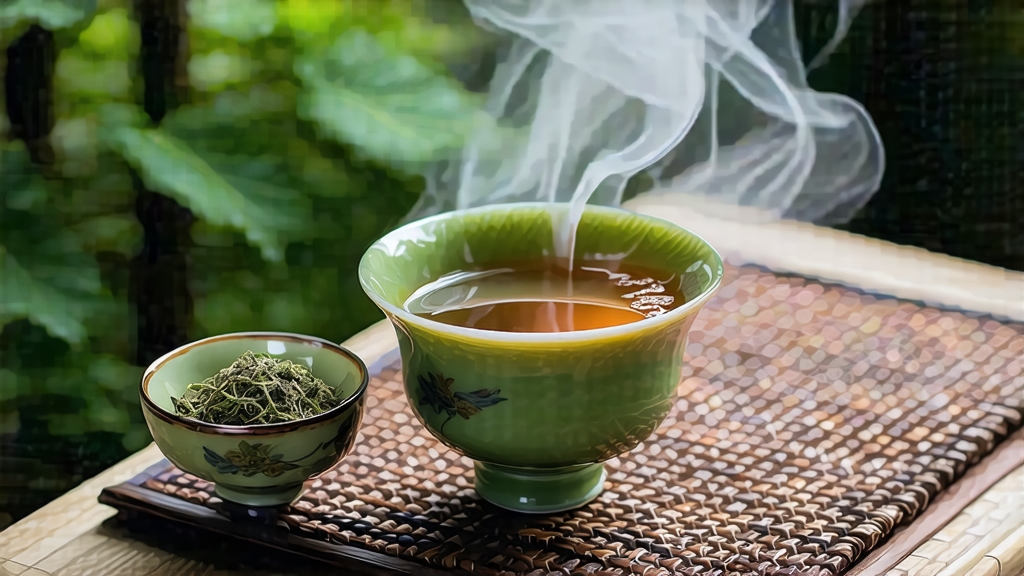
Tie Guan Yin, literally “Iron Goddess of Mercy,” is the most celebrated among China’s oolong teas, a living legend that unfurls in the cup like a miniature opera of fragrance, texture, and lingering memory. To understand this tea is to step into the humid dawn of Anxi County, Fujian, where granite peaks wearing bonnets of cloud press against terraced gardens of deep-green bushes whose serrated leaves seem perpetually wet with mountain dew. Here, for almost three centuries, farmers have coaxed one cultivar—Tie Guan Yin—into an astonishing spectrum of styles, each a different dialect of the same floral language.
Origin stories swirl like the incense in the county’s Guanyin temples. The most beloved tells of a devout farmer named Wei Yin who, in 1736, found a rusted iron statue of the Bodhisattva Guanyin in a forgotten grotto. After carrying the statue home and burning daily offerings, he dreamed of the goddess pointing to a distant shrub glowing in moonlight. The next morning he transplanted the shrub to his field; its leaves, once processed, produced a liquor so fragrant that neighbors believed the goddess herself had lent it breath. Whether myth or marketing, the tale captures the reverence Anxi people feel for a plant that has paid school fees, built houses, and even financed diaspora journeys to Southeast Asia.
Botanically, Tie Guan Yin is a clonal cultivar (Camellia sinensis var. sinensis ‘Tie Guan Yin’) distinguished by its thick, oval leaves whose dentate margins tilt slightly upward, as though cupping the mountain mist. The bush is shy-yielding: a single mu (1/15 hectare) gives only 30 kg of finished tea in spring, one reason why top grades command prices higher than silver. Anxi’s microclimate—acidic lateritic soil, 1,600 mm annual rainfall, and a 300-metre elevation band between 600 and 900 m—creates the diurnal temperature swing that locks in floral aromatics while slowing bitterness.
Unlike Yancha from Wuyi or Dancong from Phoenix, Tie Guan Yin is not a place-name tea but a cultivar-name tea; within it, however, exist three major stylistic families that confuse even seasoned drinkers. Traditional or “strong style” (nong xiang) Tie Guan Yin, popular before 1995, is oxidized 30–35 % and charcoal-baked in bamboo baskets for 30–40 hours, emerging with a chestnut-brown leaf, cocoa-nib aroma, and a thick, honeyed liquor that coats the throat like Spanish sherry. The modern “light style” (qing xiang) that conquered Beijing and Taipei cafés in the 2000s is oxidized only 15–20 % and baked briefly at 70 °C, yielding jade-green pellets that release orchid and fresh cream notes. Between them lies the “moderate style” (xiao qing) invented by the Wang family of Xiping in 2004: 25 % oxidation followed by 12 hours of electric roasting, a compromise that keeps the green sparkle while adding a whisper of toast. Each style demands different plucking standards: strong style needs a 4-leaf soft banjhi, light style insists on the more tender 3-leaf zhong kai mian, moderate style splits the difference.
Processing Tie Guan Yin is a 24-hour choreography that begins at 7 a.m. when pickers fan out across terraces wearing conical hats and Walkmans playing 1990s Cantopop—music, they claim, keeps the leaf happy. After plucking, the leaves ride down the mountain in wicker baskets lined with banana leaves to prevent bruising. Once in the factory, they are spread 3 cm thick on bamboo trays and withered under 28 °C fans for two hours, reducing moisture from 75 % to 68 %. The critical “yao qing” (shaking green) starts at sunset: trays are stacked and shaken every 20 minutes for 4–6 rounds,边缘 gently colliding to rupture cell walls and trigger enzymatic oxidation. Master shake is judged by nose: when the leaf exudes a sharp apple-peel fragrance mingled with baby powder, oxidation is halted. Next comes 3 minutes of 250 °C “sha qing” (kill-green) in a rotating drum that feels like a cement mixer, fixing the green heart while edges turn russet. Leaves are then